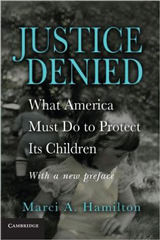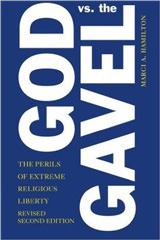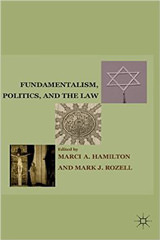Olympians are not good at sitting around, and that’s true even when they are facing their darkest secrets and coming to terms with abuse that never should have happened.
When Olympic gold medal gymnast McKayla Maroney first came forward about her sex abuse at the hands of Dr. Larry Nassar, she remarkably issued a to-do list. Disclosure was not enough for her; rather, she was already setting out a plan to make sure it never happened again. That was also not her last word on the topic, as she continues to speak out. Likewise, fellow Olympic gymnast Aly Raisman leapt nimbly from disclosure to a partnership with Darkness to Light to aid in the prevention of child sex abuse through the “Flip the Switch” campaign.
Now Olympic gold medalist in judo Kayla Harrison has co-authored a book everyone who works with children needs to read, Fighting Back: What an Olympic Champion’s Story Can Teach Us About Recognizing and Preventing Child Sexual Abuse—and Helping Kids Recover. The book begins with Maya Angelou’s brilliant words: “History, despite its wrenching pain, cannot be unlived. But if faced with courage, need not be lived again.” It is difficult to come up with a saying that better captures the spirit of this post-#MeToo era. It’s time to move from history to action. As I explained here, there is a lot of legal reform needed. There is also a great deal of public education needed, and, Harrison’s book, which is co-authored with Harvard Medical School’s Cynthia Kaplan, PhD, and Blaise Aguirre, MD, takes on that task. This is a book for parents, athletes, and everyone else struggling to make some sense of the child sex abuse epidemic.
Fighting Back blends Harrison’s story of sexual abuse by her first judo coach, some of which is taken from her middle school diaries, with discussion of the science behind child sex abuse. At first, I was not a fan, because Kayla’s segments are engrossing, and I just wanted to hear more from her raw but eloquent voice as the book reveals one entry after another addressed to “Dear God.” In the end, though, the book is impressive in its capacity to illustrate and then to explain child sex abuse: from grooming to abuse to the aftermath.
Her diary entries are interspersed with explanatory commentary by her co-authors, which explains what she was going through from a psychological-medical perspective. They break down Kayla’s words to explain what lies behind them and they support their analysis with the best recent research. Moreover, they don’t solely illuminate Kayla’s feelings, but they also explain what her parents were thinking and feeling—as well as the perpetrator and others in Kayla’s universe. This is a very ambitious book, and it largely succeeds.
As you read more, the rhythm of the book takes over and instead of simply reading Harrison’s disclosure of what happened to her, you start to anticipate the explanation that will follow each part of the story. Kaplan and Agiurre could have simply explained what Kayla said, but they go further, citing the most recent studies and showing that there is science behind their interpretation of the facts. Studies are frequently cited and explained, but not for fellow scientists and doctors. Instead, the book is highly readable and expressed in a way that the average reader is not intimidated by the science but informed by it.
Harrison does not only tell her story, though. There is copious advice on how to identify child sex abuse and how to support the victim by all three authors. Harrison herself has thought deeply about these issues, leading to some insightful proposals of her own. For example, there is a chart that summarizes “Kayla’s Suggestions for Making the Justice-Seeking Process Easier on Kids.” Without saying so, she essentially endorses the Child Advocacy Centers’ interview techniques, suggests counseling for the victim and their families, and that the prosecutors should more regularly update the victim on the progress of the case. These are sound prescriptions. There are other segments of the book where the authors in an easy-to-read chart suggest better ways of talking to a child one suspects was abused.
The authors then take the reader on a journey through what happens after the victim discloses: through the criminal justice system and then through the challenges of what they call “recovery,” which takes the road from child victim to adulthood and emphasizes the importance of support from those around the victim and the need for therapy. And they close with overarching suggestions about child sex abuse education in schools and communities.
This is a very ambitious book, and one well worth reading. It should be mandatory for teachers, coaches, youth-serving organizations, and every parent intent on preventing the sexual abuse of their children. It’s not the easiest read, but they have done a remarkable job of making difficult material and scientific research accessible. This book is a next step after disclosure, or I should say “next steps,” and it is another example of the Olympians’ can-do attitude toward whatever mountains happen to appear in their way. They are simply not going to let the child sex abuse tragedy be anything other than another extraordinary challenge to overcome. It is inspiring.
Just in case you think that Kayla is done fighting, she debuts as an MMA fighter on June 21. It’s hard to bet against her!









